Are you a Steve McQueen or Jaguar enthusiast? Leslie Kendall from the Petersen Automotive Museum provides an outstanding overview of the actor and automotive legend Steve McQueen’s 1956 Jaguar XKSS.
The 1956 Jaguar XKSS was based on the D-Type racing car and embodies the racing prestige of the Le Man’s winning unit. It possessed a 3.4 L straight-six generating 250 hp and came with disc brakes on all four wheels.
Below is the Peterson’s Museum Virtual Tour of Steve McQueen’s Jaguar XKSS.
Transcript of the Virtual Tour of Steve McQueen’s Jaguar XKSS and Photo Gallery
Hi, everybody, my name is Leslie Kendall, and the chief historian of the Petersen Automotive Museum in Los Angeles. Today, we’re going to talk about a car that is worth a million dollars. In fact, many millions of dollars. This car embodies everything that a valuable car that a desirable car would. It is fast. It is beautiful to look at. It is rare. It is beautifully built and it was owned by somebody who has become legendary, actor Steve McQueen.

The basis for this car was the Jaguar D-Type racing car. This is a 1956 Jaguar XKSS that was derived from that D- type racing car. Now they had made a number of D- Types and they were very successful at Le Mans.
In fact, Jaguar was on top of the world with their D-Types and the C-Types that preceded it in vehicles that came after. But when the car started becoming a little bit less competitive, they said, well, you know what, we’ve got twenty-five of these leftover.

They’re not going to be really racing competitively anymore. Why don’t we take them and turn them into the ultimate in road-going sports cars? And they did.
Unfortunately, they only got around to doing that to 16 of them when there was a fire at the Browns Lane factory that completely destroyed all the others, including the nine D-Types that were going to be transformed. And what a transformation it would have been, because, in order to make this racing car a road-going car, you had to do quite a few adaptations.

In fact, you had to add body protection in the form of little bumperettes. You had to have a full-width windshield.
Keep in mind that the D-Types, many of them it amounted to vehicles with two different cockpits and a little tiny window in front. But for this, you needed weather protection, which meant windshield wipers, which also meant a convertible folding top that you could fold up and latch to the windshield header. You also needed windows on the doors and these windows didn’t roll up and down.

You took them out. You had to unscrew them. Then they came out. It was a bit of a process. So you kind of wanted to plan your trip because these are not things that you’re going to want to leave by the side of the road. You don’t want to lose windows to your Jaguar XKSS.
The cockpit is very familiar to anybody who’s ever raced one of these, but it is still it’s a little bit more civilized.

The interior of this car is made even more special because Steve McQueen had counterculture artist, Von Dutch, make a special door for the glove compartment.
You can only imagine that when you were accelerating if you had a hole in your dashboard that contained gloves or paperwork or registration or anything else, it would come flying out the harder you accelerated. My hunch is that Steve McQueen had a problem with that. So he had Von Dutch make a special glove box door.

He also had Tony Nancy, upholster the interior. Tony Nancy was well known and very highly regarded in hot rods circles, and he was written up all the time for his work in Hot Rod magazine and other magazines road-going that talked about vehicles that were so important to the youth culture of their day.
Another adaptation for road-going use was a provision for luggage. I don’t think you see very many racing cars today with a luggage rack on the back, but the XKSS was certainly was one of them. So here you have a car that embodies everything distinctive about a car that is worth many millions of dollars. Some say this is worth well into eight figures.

So few were built, so few have a provenance of this car and so few were kept intact and are as original and as authentic as this car.
McQueen had it repainted. It started out white with a red interior. McQueen didn’t like those colors. But in this case, Factory original takes a back seat to its notable owner. McQueen did not like those colors, so he had them changed. This car is about being an XKSS, but it was also about being Steve McQueen’s car, probably the most potent, most raw sports car that he would ever own. He would terrorize Los Angeles.
He enjoyed going fast along Mulholland Drive. If anybody is in Los Angeles I urge you to take that street, it’s windy, it gives you the ability to test your driving skill as long as you keep things within reason, you can have a little bit of fun on Mulholland Drive. Undoubtedly, Steve McQueen had his share of fun too.

It wasn’t just the coachwork of the car that set it apart or its barebones nature- it was the engine of this car. It was a 4.2-liter straight-six with a double overhead cam that produced 250 horsepower. 250 horsepower in a car that weighs this little is an enormous amount of horsepower. It really got the car down the road.
You had disc brakes on all four wheels, something that Jaguar had helped innovate in its day, which meant that you could go fast a lot farther into a turn before you had to slow down because the brakes were so efficient and they dissipated heat so well.

But opening the hood and looking at the engine is like looking at a jewel. It’s mechanical artistry at its best.
[Source: Petersen Automotive Museum]
[Photo Credits for 1956 Jaguar XKSS: Concours Virtual]


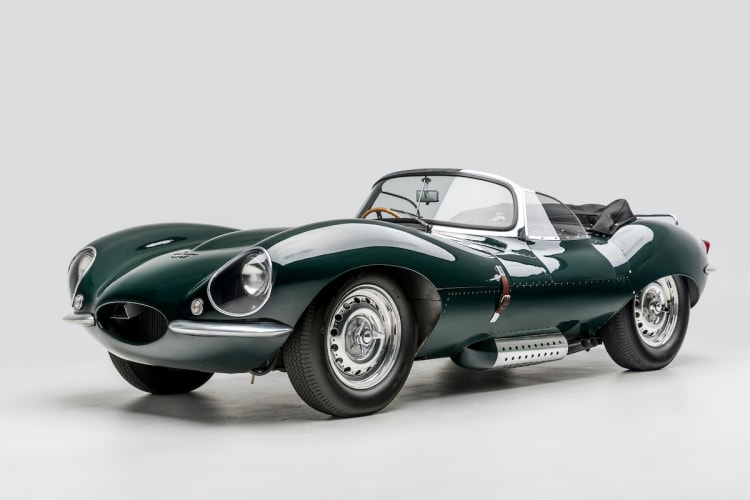
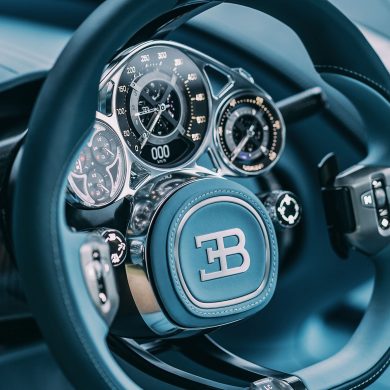
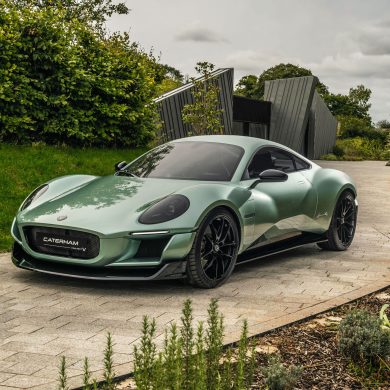
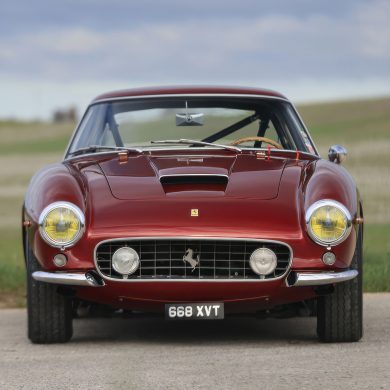
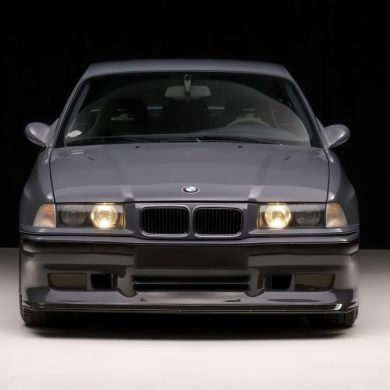

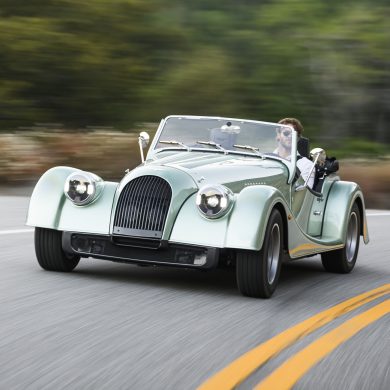


Not true. Only 5 cars were lost in the fire, all in the service department. 2 XKSS customer cars and 3 D Types under conversion.to XKSS. The remaining D Types, awaiting conversion, were in store and not affected by the fire, I know, because I had the job of looking after them and I was there during the fire. I raised the alarm! See my book, Jaguar from the shop floor, Veloce pub.
And here we go again: the American money fixation. Why, oh why, do Americans have to put a price on everything? Isn´t beauty, history and rarity enough?
Otherwise a nice presentation of a fabulous car.
You’re the first who has said this in 60 years so…!
How the heck old are you anyway?
BTW, I owned a D-Type in the mid 1970s. Carlyle Blackwell’s old car.
The write up says the car has a 4.2 litre engine surely this engine was a later development? Would it not have been originally 3.4 litre?
I believe all of the XKSS’s came with a 3.4 Litre engine . Not a 4.2 Litre. That became available in late 1964 with the updated Series I E-Type.
Pity about we Americans with our fixation on the price of everything. We seem to be alone in that. I was under the impression that in the UK, they just give you a car if you fancy it.
True, it’s a 3.4 litre engine not 4.2 which wasn’t even in the first iteration of the Etype years in the next decade (that started with a 3.8). Oh dear… telling knowledge lacking for a museum…